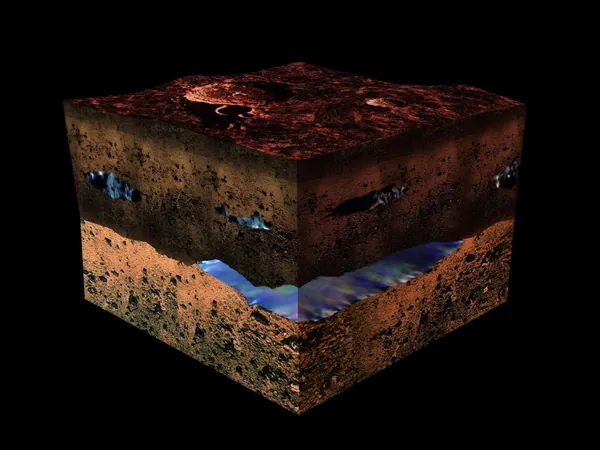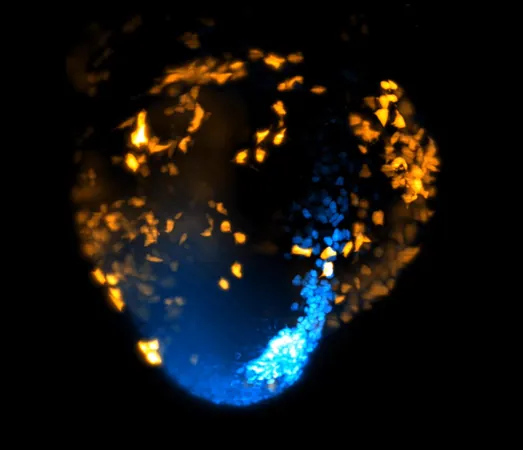
Searching for Life on Mars: Could Microbes Be Hidden in the Ice?
2025-04-21
Author: Emily
Mars: A Planet of Extremes with a Climatic Past
Mars may currently be a frozen, desolate landscape, but it once thrived with warmth and water—boasting lakes and oceans that covered its northern hemisphere. This begs the question: did life ever bloom on the Red Planet? Scientists have theorized that, billions of years ago, life could have thrived on Mars and might still be lurking beneath its icy surface.
A New Frontier in the Search for Life
Since the historic Viking missions in 1976, the quest for signs of life has been relentless. As rovers like Curiosity and Perseverance venture through ancient lakebeds in craters such as Gale and Jezero, researchers have started to cast their nets even wider. A fresh perspective suggests that the frosty mid-latitudes of Mars could be the key to unlocking this ancient mystery.
Microscopic Survivors: The Promise of Photosynthesis in Ice
A groundbreaking study led by Dr. Aditya Khuller from NASA's Jet Propulsion Laboratory highlights the possibility of finding photosynthetic bacteria frozen within Martian snow and ice. Drawing parallels to Earth’s own bacterial life found in glacial ice, the research team argues that similar microbes might withstand the frigid conditions of Mars.
The Science Behind the Search: Modeling Martian Ice
Utilizing a sophisticated radiative transfer model, the team simulated stacked layers of snow, ice, and dust on Mars. Surprisingly, they discovered that solar radiation penetrates a maximum depth of about 6.5 meters (21.3 ft) in clean ice, paving the way for potential microbial life to exist just beneath the surface.
The Habitable Horizons of Mars: Could Microbes Survive?
In optimal conditions—where both temperature and liquid water coexist—Earthly microbes thrive, performing photosynthesis and scavenging nutrients from the surrounding environment. On Mars, specific regions may experience seasonal melting that could create temporary habitats for these resilient organisms. This tantalizing possibility raises the stakes for future missions.
A Glimpse into a Martian Summer
Imagine a Martian summer where snow and ice melt, creating a fleeting oasis of liquid water beneath a translucent surface. Microbes such as cyanobacteria could harness this moment to conduct photosynthesis, utilizing both the water and nutrients from the dust—this prime feature could serve as the best hope for finding life on Mars.
Conclusion: The Future of Astrobiology on Mars
As scientists shift their focus to the mid-latitudes of Mars, the search for life becomes increasingly exciting. If these microbial habitats exist, they represent the most promising locations for discovering evidence of life on the Red Planet. With innovative research paving the way, we may soon unlock Mars' secrets and understand whether we are alone in the universe.









 Brasil (PT)
Brasil (PT)
 Canada (EN)
Canada (EN)
 Chile (ES)
Chile (ES)
 Česko (CS)
Česko (CS)
 대한민국 (KO)
대한민국 (KO)
 España (ES)
España (ES)
 France (FR)
France (FR)
 Hong Kong (EN)
Hong Kong (EN)
 Italia (IT)
Italia (IT)
 日本 (JA)
日本 (JA)
 Magyarország (HU)
Magyarország (HU)
 Norge (NO)
Norge (NO)
 Polska (PL)
Polska (PL)
 Schweiz (DE)
Schweiz (DE)
 Singapore (EN)
Singapore (EN)
 Sverige (SV)
Sverige (SV)
 Suomi (FI)
Suomi (FI)
 Türkiye (TR)
Türkiye (TR)
 الإمارات العربية المتحدة (AR)
الإمارات العربية المتحدة (AR)